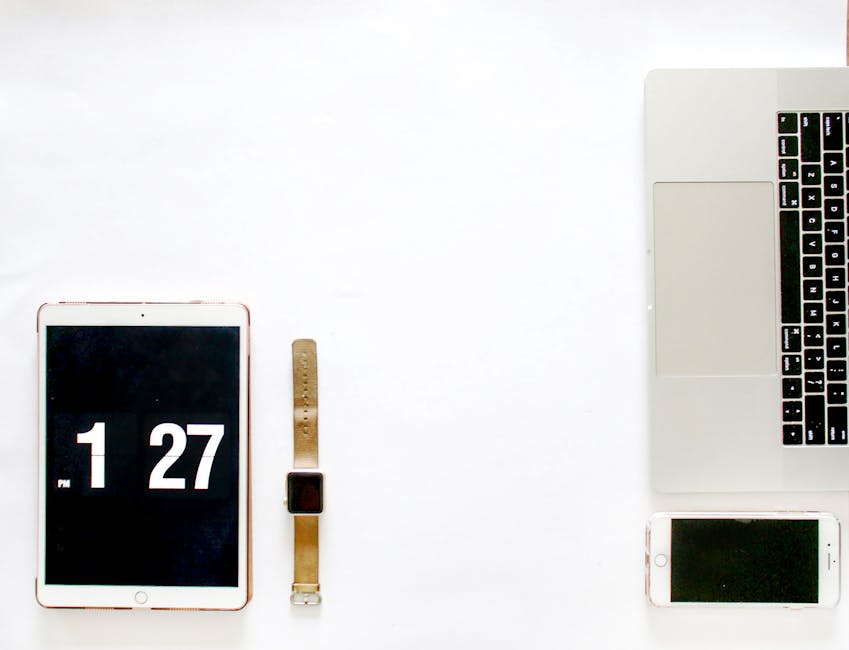Here we are, 2025. It feels like not that long ago, everyone was just getting used to these little gadgets in their pockets, right? Now, it’s just, like, a given. Everybody’s got a phone, and pretty much everybody’s using apps, all the time, for everything.
From figuring out dinner plans to, well, running a whole business sometimes, these digital tools, you know, they’re everywhere. And it’s really something that makes you think about how all this stuff actually gets made.
People often wonder, how do you even start to develop a mobile app? It’s not just magic, though sometimes it might feel like it is to the regular user, which is a neat trick in itself. There’s a whole process, a journey, one might say, that many individuals go on when they want to make their own little digital helper.
And it changes a bit, you know, year to year, but the core ideas, they sort of stay put. What we’re talking about here is a mix of thinking, making, and then just keeping it all working. It’s considered to be, like, an art and a science, this whole app making thing.
You’ve got to be creative, sure, but you also gotta stick to some rules, some logic, that lets the tiny machine actually do what you want it to do. Sometimes it’s a bit messy, that process, not always a straight line from idea to finished product.
There are twists and turns, little bumps in the road, that you just gotta get over if you want your app to be, well, good. And it’s not just for the big companies anymore, either. Lots of regular people, with just a neat idea, can get into this world, which is pretty cool when you think about it.
It opens up a lot of possibilities, for a lot of people, all over the place. Understanding this journey is actually quite helpful, for anyone curious about what goes into their pocket-sized companions.
Getting Started – The Initial Brainstorming and Sketching Bit
Before anyone even thinks about writing a single line of code, there’s this really important part, the thinking part. You gotta figure out what your app is actually going to do. What problem is it supposed to fix for people, or what fun thing is it going to offer them?
This is where the initial spark happens, where the idea first pops up in your head, like a lightbulb. It’s pretty much the most important first step, you know. Because without a good idea, or at least a clear one, everything else just kind of falls apart.
So, you think about your idea. Who is this for? Like, who’s going to be tapping away on this thing? Is it for students, or maybe busy parents, or even just people who really like cats?
Knowing your audience, the actual people who will use it, helps you shape everything else. It really does make a big difference, understanding their needs. What do they already like, what do they usually do with their phones, you know?
Then, you start to sketch it out, sometimes literally on paper. Like, really rough drawings, stick figures of screens. Where does the button go? What happens when you tap here, or swipe there?
It’s not about making it look pretty yet, not at all. It’s about figuring out the basic flow, the path people will take through your app. This basic blueprint, it’s like a map for everyone who will work on it later.
This early stage, it helps sort out the big picture stuff, before things get too complicated. You’re trying to nail down the main features, what absolutely has to be there, and what can maybe wait for later.
It’s also a good time to talk to some potential users, even if it’s just your friends or family, to get some early feedback. People often have really good suggestions, even when things are still super basic, you know.
Planning the Ins and Outs – Thinking About the Guts of It
Alright, so you’ve got your big idea, and you’ve drawn some little pictures. Now, it’s time to get a bit more serious about the planning. This is where you sort of dig into the details, figuring out how everything is actually going to work behind the scenes.
It’s not just about what you see on the screen, but all the stuff that makes it tick. This part, it needs some careful thought, no question about that. You’ve got to pick your platform, for starters.
Are you going for iPhones, Android phones, or maybe both? This decision, it really shapes a lot of what comes next. Each one has its own way of doing things, its own tools and languages.
So, you gotta pick the path that makes the most sense for what you’re trying to build and who you want to reach. It’s a pretty important choice, you know. Then, there’s the whole design bit, but not just the look.
It’s about the user experience, often called UX. How smooth is it to use? Is it easy to find what you’re looking for? People get pretty annoyed when an app is confusing, so making it simple and clear is super important.
This means lots of planning around every button, every screen, every little interaction someone has with it. Also, you have to think about the backend. That’s like the engine room of the app, where all the data lives and all the heavy lifting happens.
Servers, databases, APIs – these are all parts of that, making sure your app can talk to other services or store user info safely. It’s the stuff that makes the app functional, even if users don’t directly see it.
A good backend is what makes an app reliable, something you can count on. This is also the stage where you set up a project roadmap. It’s basically a step-by-step guide, showing what needs to happen and when.
Breaking the work down into smaller, manageable pieces, like sprints or phases, helps keep everyone on track. This makes the whole thing feel less daunting, more achievable, which is always a good thing when you’re building something big. Sometimes you have to change it up, too, which is just part of it.
The Building Part – Making It Real, Piece by Piece
Okay, so the planning’s done, pretty much. Now for the exciting bit, the actual making of the app. This is where all those ideas and drawings start turning into real, working software.
It’s where the magic actually begins to take shape, through lines of code and careful design work. It’s a process that requires a lot of patience, and sometimes, a lot of coffee, for the people doing the work.
First, the actual coding begins. Developers, those are the individuals who write the programming languages, they get to work turning the designs and plans into functional features. Each piece of the app, every button, every screen transition, every bit of logic, gets built out line by line.
It’s a bit like building a house, you know, brick by brick, making sure each one is placed just right. While the coders are doing their thing, the designers are making sure everything looks good and feels right.
This is the UI, the User Interface, part of the design. They pick the colors, the fonts, decide where the pictures go, making sure the app is nice to look at and feels comfortable to use.
A pretty app is often a successful app, because people just like using things that look good, it’s a fact. As parts of the app get built, they’re constantly being tested. This isn’t just a one-time thing at the end.
Developers test their own bits of code, then teams test features as they come together. They’re looking for bugs, those little mistakes that can make an app crash or misbehave.
Finding and fixing these problems early on saves a lot of headaches later, which is always a good move. Putting it all together, making sure every piece talks to every other piece correctly, can be a tricky business.
It requires a lot of coordination between different teams – the coders, the designers, the testers. But when it all starts working smoothly, it’s a pretty satisfying feeling, seeing your creation come alive. It truly is a collaborative effort, needing many different skills to make it happen.
Getting It Out There and Keeping It Going
You’ve built this amazing app, it’s working, it looks good, and you’ve even tested it a bunch. What now? Well, you can’t just keep it to yourself! The next big step is getting it out into the world, letting people actually download and use it.
This part, it’s all about launching and then making sure the app stays relevant and useful for a long time. It’s not just a one-and-done kind of deal. Launching an app normally means submitting it to the app stores – Apple’s App Store for iPhones and Google Play Store for Android devices.
There are specific rules and guidelines you have to follow for each store, and they review every app before it goes live. This can take a little while, sometimes, so you gotta be patient during that waiting period. It is a necessary step to get your app into people’s hands.
Once it’s live, you can’t just sit back and relax. You gotta tell people about it! Marketing and promotion are a big deal. How are people going to find your app among the millions of others out there?
This means things like social media posts, maybe some ads, or even just telling everyone you know. Getting the word out is super important for an app to find its audience and start growing.
Some people even look for help with this, like reaching out to a company for Mobile app development Houston for a more complete package of services, you know, getting it all done. And then, feedback starts coming in from users. This is gold.
People will tell you what they like, what they don’t like, and what they wish your app could do. You use this information to plan updates. Apps are living things, they need to be updated regularly, adding new features, fixing any lingering problems, and keeping them running smoothly on newer phones and operating systems.
So, it’s a constant cycle, really. You launch, you gather feedback, you update, and you keep going. That’s how apps stay popular and useful for years. Ignoring your app after launch is like buying a plant and never watering it; it just won’t thrive.
The world of mobile apps moves fast, so staying on top of things, making sure your app is always improving, it’s just part of the deal. Developing a mobile app, it’s a journey that’s for sure, from that very first little idea all the way to a product that people are using every day.
It’s got its tough bits, its creative bits, and a whole lot of moving parts that need to come together just right. But when it all clicks, and you see people actually enjoying what you’ve created, it is truly a pretty cool feeling.
It’s not just about the tech anymore; it’s about connecting people, making things a bit easier, or just plain more fun, which is, you know, what really matters in the end. So, if you’ve got an idea buzzing around in your head, there’s never been a better time to think about bringing it to life. The tools and the methods, they’re out there, waiting for someone to pick them up.
Frequently Asked Questions about Mobile App Development
1. How do you normally start when you want to develop a mobile app idea?
You normally start by just thinking about what problem your app is supposed to fix, or what cool thing it will do. Who are the people who will use it? Just drawing some rough screens on paper, figuring out the basic steps users will take, that’s a really good initial point. It helps make the idea clearer for everyone involved.
2. Is it hard to pick between building an app for iPhone or Android first?
Yeah, it can be a bit tricky, that choice. It really depends on who you’re trying to reach with your app, you know? If most of your potential users are on iPhones, then starting there makes sense. Same for Android. Sometimes people build for both at the same time, but that often takes more time and money. It’s a big decision, this one.
3. What kind of team do you typically need to develop a mobile app?
Normally, you’d need a few different types of people. You’ve got your idea person, obviously. Then you’ll want someone for design (how it looks and feels), and then developers who actually write the code. Testers are important too, to find all those little problems. For bigger apps, you might have project managers keeping everything on track. It’s usually a group effort, often with many hands on deck.
4. How long does it usually take to develop a mobile app, from start to finish?
Oh, that’s a tough one to give an exact number on, because it really varies so much. A really simple app might take a few months, like three to six months, sometimes more. But a more complex one, with lots of features, that could easily be a year or even longer. It just really depends on what you’re trying to build and how many people are working on it. It’s not a quick sprint, normally.
5. What happens after your mobile app is launched and people can download it?
After launch, you really need to listen to what users are saying. People will tell you bugs they found, or features they want. So, you collect that feedback and use it to make updates, adding new stuff or fixing old stuff. Marketing doesn’t stop either; you keep trying to get more people to discover and download your app. It’s an ongoing process, keeping the app fresh and working well.










